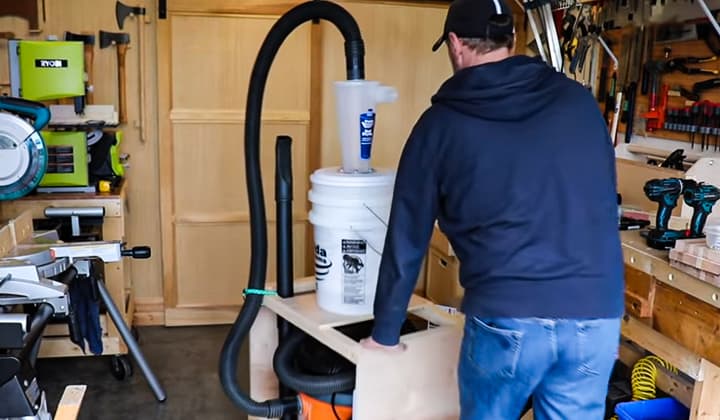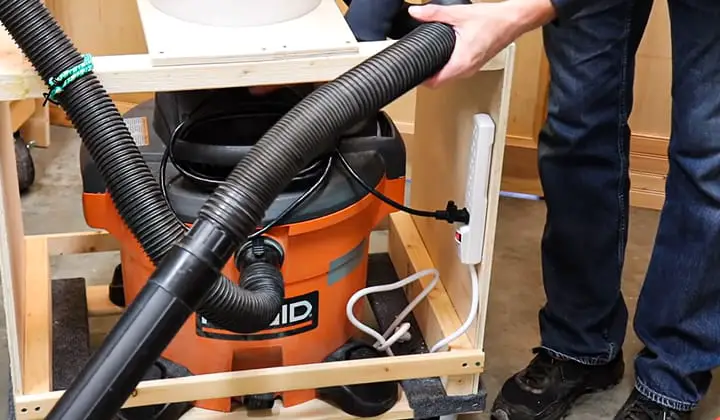If you own a workshop in a tight space, you already know how difficult it is to keep it clean and dust-free. With a cluttered workspace, managing and organizing your tools is essential. Since you are already limited in space, you need to get the most utility you can get out of it through organizing correctly.
However, organizing is not the only issue that you have to deal with most of the time. Another crucial factor to look out for is the dust management system in your workshop. You cannot get those big industrial air conditioners to take care of the dust for you since you are already suffering from space. 
If you are a small shop owner and suffering from dust issues, you do not need to be worried any longer. In this article, we will take a look at some of the effective solutions for small shop dust management that you can apply in your personal workspace to eliminate dust once and for all.
1. Use a Dust Collector System
When you are dealing with dust you must invest in the best dust collector unit. Dust collector systems are an essential element of any workshop. The sole purpose of this machine is to collect the dust from the air and purify it by eliminating the impurities. However, most of these units are too big to set up well in a small workshop environment.
Thankfully, these days, you can easily find a portable unit that could fit inside your workshop at a bargain price. They might not be as powerful as their bigger counterparts, but they work well enough in a small working environment.
If you do not want to go with portable units, either you can build a dust collection system or you can also find small stationary models if you look hard enough. Keep in mind that stationary units that fit your workshop size might be rare, and you might have to spend a few extra bucks to get the one you need.
2. Use an Air Cleaner
A dust collection system alone might not be able to take care of all the dust issues in your workshop, especially if you spend a lot of hours on different projects. In this situation, you would also need an air cleaner to keep the air pure and dust-free. A good-quality air cleaner unit, in addition to a dust collection system, will ensure that any dust in your workshop is eliminated.
If you cannot afford an air cleaner, you can even use a filter from your old furnace to make one for yourself. All you need to do is attach the filter to the intake section of your box fan and hang it on the ceiling. The fan, when switched on, will take the air inside, and the dust will get trapped in the filter.
3. Use a Small Shop Vacuum
You would also want to keep a small shop vacuum nearby to help you clean up your workshop when you are done for the day. Giving your workshop a thorough clean up every day ensures that there is no dust there the next day. Ideally, you would want to spend at least 30-40 minutes on clean up duty every day.
A small shop vacuum will make the cleanup process much easier and faster. Try to find a lightweight, portable shop vacuum of good quality that can reach corners of the tables easily. When you are done vacuuming, make sure you get rid of all the collected dust in a trash bin outside the workshop in a plastic bag.
4. Padding on the door and window openings
The door and windows in the workshop are also responsible for making your workshop dusty. The dust created in the workshop is not the only issue you are dealing with; the outside environment is also responsible for dust buildup inside your workshop.
To make sure none of the outside elements can get in the room, make sure the room is properly sealer. Check the corners of the window and add padding to them to make sure outside air cannot come into the workshop. Additionally, you should also seal the corners of your door, especially the underside.
5. Keep a Trash Bin Inside the Workshop
You should always keep a trash bin beside your workbench to get rid of any unwanted materials easily. Small specks of dust can fly from rough wooden pieces under the fan. They will eventually add to the amount of dust in the air, which will ultimately compromise the integrity of your workshop.
Make sure you have a closed top bin in the room where you can dispose of unwanted materials easily. Additionally, you should place a plastic bag on the inside of the bin. When you are done for the day, you can just take out the plastic bag and drop it on the garbage disposal.
6. Proper Workshop Attire
Make sure you have separate clothing for when you are working in the workshop. These include work apron, safety goggles, leather gloves, and separate workshop boots. The clothing that you wear in the workshop should never leave the room. You should keep them near the door so that you can change into them the moment you enter the room.
It would ensure that outside dust cannot enter your workshop through your clothes, and also the dust in the workshop does not go outside. You should remember to clean your workshop clothes regularly. You can even use your portable vacuum on your work gears to get rid of loose dust from them.

Final Thoughts
Managing dust in a small shop can be even more difficult to achieve than a larger one. With large shops, you have more options to tackle the issue, but for a small one, you need to be careful where you are investing your time and money.
With our tips, you should be able to control dust buildup in your small shop effectively. We hope you found our effective solutions for small shop dust management helpful and informative.
I'm Joost Nusselder, the founder of Tools Doctor, content marketer, and dad. I love trying out new equipment, and together with my team I've been creating in-depth blog articles since 2016 to help loyal readers with tools & crafting tips.

